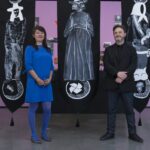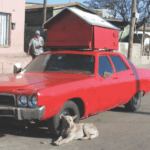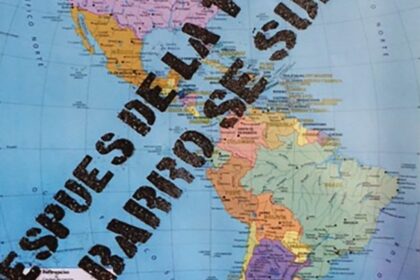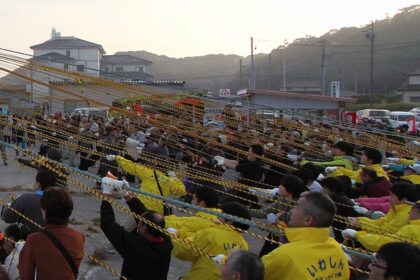New Devices for Thinking the Common
Iconoclasistas
Translated from Spanish by Sarj Rosales Juárez (SAIC, MAATC, 2021)
Through the practice of collective mapping, we have learned there is a need for the forging of new paths and for a thorough analysis of hegemonic discourse in order to orient ourselves within it. To create new accounts of this discourse from the position of subalternaties and peripheries. To read the world strategically and to interpret it. To organize the informational noise in which we are immersed: we are no longer limited by a lack of information, but quite the opposite. To this int(f)oxication, we must respond with transverse methods of “combing” information (like our mapping), from “native” knowledges that reside in these territories and with an emancipatory gaze. Our current search is based on the design and creation of new platforms—technical and contestant—with the goal of submerging into the dialogical and “alienating” ourselves collectively from hegemonic senses, discourses and practices. At the same time, we strive to reflect on the technologies of control and the effect that they exercise on bodies and on subjectivities.

These devices for thinking the common are shaped by graphic elements that adopt the form of different types of diagrams. They encourage a collective questioning about meanings and occurrences, both on temporal planes (tomorrow, today, yesterday) and spatial ones (above, below) as well as transversal ones that run across these two registers. They propose a method of explanation and connection based on different knowledges and experiences. They promote the organization of a scattered information from situated and synthesized points of view into lineal, circular and angular pieces. They are technologies for looking, put together with instruments that calibrate vision: brightening opaque areas and dimming those that are too clear. They serve as articulated parts that boost an imaginary zoom lens strengthening the construction of complex panoramas from a wide angle, or making precise minute details from a magnifying point of view. They form objects of collective knowing, rebuilt in a specific space and time. They demonstrate the alterations of the environmental effects in which they are inserted, like the vanishing points that enable the transgression of this conditioning. They are mechanisms that allow knowing and knowing ourselves, collective reflection, favoring moments of direct and non-hermetic communication. They also allow the dissemination of both our challenges and our transformative practices.

The graphic elements that form the devices that we use to think the common propose a journey through methods that favor dialogue in group-works. They engage each other to make sense of the complexity of situated practices. They guide the participants in discussions, offering a space of systematization that organizes the polysemy of the interventions in a creative and flexible manner. Although they have a frame and a horizon, they are open and interchangeable. They enable organizational platforms that move between structure and chaos, from the most codified to the most disruptive. They assemble several branches of knowing and thinking, and they transmit interactions and connections that are visualized through collective work. At the same time, they interrupt normalized gazes and common sense, intercepting the flow of doing/thinking manifest in mechanical and repetitive maneuvering. They make the gears of an organization evident (its structure, properties and characteristics) that are necessary for an agreed-upon projection of functioning and its possible bypasses. They speed up the making of community plots, interwoven into a changing process that temporarily relies (without becoming fixed) on a graphic maneuver. They examine the genealogies and the legacies of practices, events and discourses, at a molecular level and in larger systems as well. They make clear the fuzziness of the practice, starting from the construction of a panorama that complexifies and locates the process of making, facilitating connections and clues, opening questions, opening gates from which to plot present strategies in conjunction with future projections.
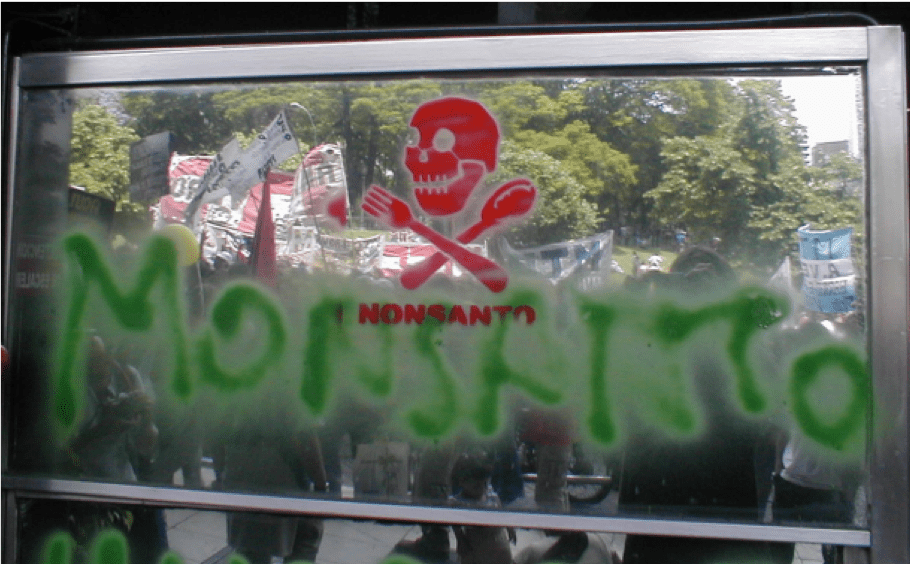

The devices for thinking the common favor the synthesis of collective narratives with graphic elements, from a perspective that joins rational with sensory thought, enabling a coding that is both meaningful and creative. In group works, the devices facilitate the emergence of a complex understanding that articulates practices, occurrences and discourses in flows of intensity (encounters, noises, alliances), localization (territorialities), duration (times) and contexts (responsibilities, reasons, consequences). At the same time, they allow the visualization of organizational genealogies, the integrated legacies and the anthropophagies, propelled translations and derivations, the disseminated amplifications and the truncated processes. They are sustained by a ruminant practice, a constant movement through which what is incorporated does not have a static character, but is able to be regurgitated, mixed up, and swallowed again. This reflective process crumbles the collaborative ways of working in order to adjust, correct, widen, and deepen them, at all times considering the contributions and interactions that emerge, shattering any illusion of statism, individualism or stillness.
Decalogue of Good Iconoclasistas Practices
1. Produce Tactical Spaces
We work collectively and through the activation of visual and graphic resources to strengthen the exchange of knowledge about a specific territory. For our practice, mapping is a key tool and we understand it as an exercise that is activated from our capability to take off into a bird’s flight (perceptive, sensory, imaginary, critical) over a territory. In this sense, we organize our workshops as tactical spaces, in which the construction of collaborative knowledge is connected to the idea of constructing common tactics or, ways of transformation —today, here, now—that answer to the needs of a neighborhood, a community, a collective or to the members of a certain space.

2. Organize Collaborative Research Processes
We create energetic workshops of co-research in multidisciplinary spaces. Invited by social, political, cultural and student organizations or institutions we propel the activation of critical pedagogies for the creation of other forms of knowledge. We aim to generate a creative process that subverts the place of enunciation in order to challenge the dominant discourses of a given territory, starting from the knowledge and experiences the participants have of their lived-in and recognized space.
3. Imagine Diverse Scales and Territorial Multiplanes
We understand territory in a wide way: this concept not only includes a geographic dimension but also a discursive scope, the spaces of memory and the imaginary, the surfaces of the senses and of corporalities, the landscapes and time dimensions of the city. We address territory through diverse lenses and perspectives, representations and multiplanes that elevate us like birds, but that also let us look in from below. This type of approach allows for a collective platform from which we can trace webs of power and make visible possible alliances with other sectors when it’s possible to encourage a transformative construction.
4. Invent Graphic and Visual Resources and Devices
We design a combination of visual tools, resources or elements geared towards summarizing processes or organizing elements, making them freely accessible so that they can be activated by others. These instruments have been experimented within the context of diverse opportunities; they are a part of our tool box and they demonstrate the inventive possibilities that result from collaborative research. They are added to other resources that we use for the vitalization of our workshops, which include artistic dynamics and processes adopted from other disciplines such as graphic design, critical pedagogy, militant research, and communication studies.
5. Make the Body Think
We focus on the design of tools that allow for the collaborative creation of knowledge bound together with the knowledge of the body and retrieved through sensory, experiential and perceptive memory. We strive to provoke the emergence of that which is not mediated by words; other territories of political imagination that come out and are manifested in the frame of a horizon made up of objectives traced out in the workshop. At the same time, this process is connected with the constitution of critical subjectivities, the formation of communal bodies constituted by the exchange of knowledge, understandings and practices, and organized around a shared diagnosis and know-how.
6. Project Narratives that are Critical and in Analog Format
We seek to deconstruct normalized experiences of reality through the design of graphic and playful dynamics, in analog format and in a way that is easy to reproduce. We aspire to “estrange” ourselves from the discourses of the media that perpetuate and format common sense, in order to generate critical narratives in a collective form. During the process of collaborative research, and the processes of the participants’ dialogue, discussion and debate, there ensues the creation of a series of enunciations about the territory that facilitate the elaboration of processes with territorial perspectives. They provide a way to coordinate future interventions and projects based on collective organization.
7. Prioritize the Community Point of View and Popular Knowledge
We arrive to the territories in which we work with planned and articulated projects based on the feedback of the organizations, groups or communities with whom we are to work. The starting point in the collective research process is provided by popular, regional and communal knowledges. Those that arise from lived experiences, senses and perceptions. We are interested in recovering and working with gazes that have been made invisible by academic or institutionalized knowledge. The understanding developed in our projects is the result of a collective construction and we aim to create a space of reflexive participation. When we unfold the working devices in our workshop, the participants already know they will work within a determined thematic frame and towards certain objectives. The core idea is to dialogue and to listen, and it is from there that narratives are shared and the dynamics in the workshop are adjusted.
8. Manage a Strategic Articulation with Institutions
In the mediation processes between institutions and territories, our priority is the community. One of the requirements we raise when we are invited to a space of this nature is that they must be or begin to be in contact—that is if they have not yet—with an association, organization, center or collective of the neighborhood with whom to co-organize the workshop. This is the way we have found that prevents us from simply “landing” in the territory, but instead plotting an articulation from a position that’s much more empathic and attentive. The institution facilitates the space and the economic resources, and the territorial actors adjust the tactical aspects based on certain communal and regional objectives.
9. Mobilize an Ethic of Care/Feminist Pedagogies
Like any tool, these devices have an implicit potential but at the same time carry a risk: that of being used to advance interests that differ from the ones that we hope to support, or of making certain communities vulnerable due to the exposure of previously private information or knowledge about that community. This is why we create an initial or preparatory work with the organizations or institutions that invite us to organize a workshop for them. If it is decided to build a communication tool based on the mapping that we do and to disseminate it publicly, the information included must be previously consented to, taking certain limitations into account. Another aspect to consider is that this type of research has to become a part of a larger process, constituting a tactic within a process of collective organization.
10. Promote the Emancipation and Activation of Tools/Open Source
In these collective research workshops, we do not just work with a graphic resource that was previously designed based on objectives agreed upon with the organizers. We also start processes from scratch, collectively creating each one of the steps to guide and accompany the participants in the design and experimentation of a collective research project, with visual and graphic devices, on specific territories. In the training spaces of the project, work is carried out based on the inquiries and wishes of the participants. The process begins by defining the territory and the theme. Then, the categories are elaborated and the icons are drawn. And so begins the process of mapping and research into several graphic artefacts based on the idea of multiplanar levels of meaning. To conclude, we develop a title that synthesizes the whole experience and a justification of the whole process that underlines the why and for whom.
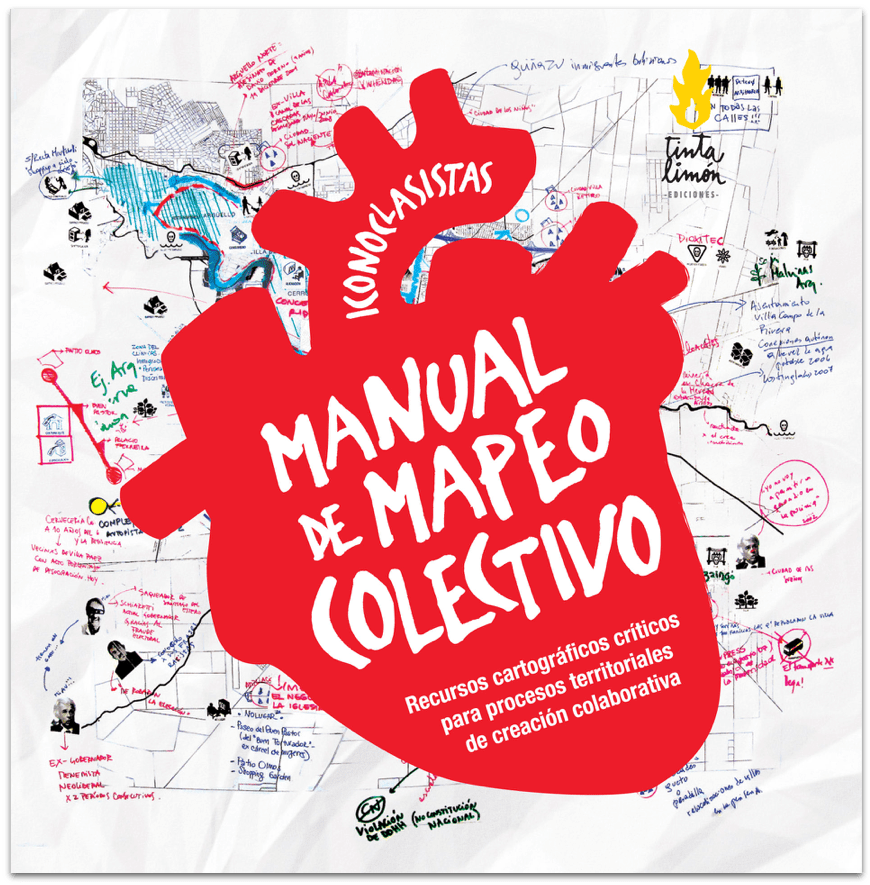
Para bajar en español e inglés/To download in Spanish and English: Iconoclasistas – Mapeo colectivo y herramientas de código abierto
Iconoclasistas is an Argentine duo formed in 2006 by Pablo Ares and Julia Risler. They organize projects combining graphic art, creative workshops, and collective research. Their productions are posted on the internet though creative commons licenses, thus boosting their free dissemination and derived use. In 2008 they started experimenting with various map-making tools in collective work spaces. This gave rise to collective mapping workshops and processes to engage in collaborative research on territories. By activating graphic devices and designing an arsenal of tools, they encourage critical reflection to give impetus to resistance and transformation practices. In 2013 they published the Manual on Collective Mapping: Critical Cartographic Resources for Territorial Collaborative- Creation Processes, in which they systematize and share methodologies, resources and dynamics for the self-organization of workshops. As a space that is always changing and linked to the processes that unfold on implementing projects, Iconoclasistas forms part of a dynamic network of affinity and solidarity scattered around different points of the mapa mundi. That multiplicity of encounters creates visual supports that run through that political and affective storyline and provide the possibility of adapting the production of playful and pedagogical resources to a tactical horizon.
Spanish Language Version
Nuevos Dispositivos Para Pensar El Común
Por Iconoclasistas
Con la práctica del mapeo colectivo aprendimos que necesitamos mapas para trazar nuevos caminos, desmenuzar relatos hegemónicos y orientarnos. Para construir nuevos relatos desde las subalternidades y las periferias. Para leer el mundo estratégicamente e interpretarlo. Para organizar el ruido informativo en el cual estamos inmersos: ya no padecemos una limitación de información sino todo lo contrario. A esa int(f)oxicación, responder con métodos transversales de “peinado” (como el mapeo), desde los saberes “baqueanos” de quienes habitan los territorios y con mirada emancipatoria. Nuestra búsqueda actual se sustenta en el diseño y la creación de nuevas plataformas, técnicas y modos de interpelar, a fin de profundizar en lo dialógico y “extrañarnos” colectivamente de los sentidos, discursos y prácticas hegemónicos; a la vez que intentamos reflexionar acerca del funcionamiento de las tecnologías de control y los efectos que su accionar genera en los cuerpos y subjetividades.
Los dispositivos para pensar el común están formados por elementos gráficos que adoptan la forma de diversos tipos de diagramas. Ayudan a preguntarse colectivamente sobre el sentido de las cosas y los acontecimientos, tanto en planos temporales (adelante, hoy, detrás), espaciales (arriba, abajo) y transversales a esas dimensiones. Proponen un método para explicar y conectar a partir de diversos saberes y experiencias. Potencian la organización de una información dispersa a partir de puntos de vista situados y sintetizados en piezas lineales, circulares o angulares. Son tecnologías para mirar, compuestas por instrumentos que calibran la visión: aportan luminosidad a zonas opacas y ponen claroscuros en aquellas demasiado evidentes. Funcionan como piezas articuladas que potencian un zoom imaginario fortaleciendo la construcción de panoramas complejos desde una mirada amplia, o puntualizando aspectos micro desde una mirada de lupa. Construyen objetos de conocimiento colectivo, reconstruidos en un determinado espacio-tiempo, mostrando las alteraciones que generan los efectos del medio ambiente en el cual se insertan, como los puntos de fuga que habilitan para transgredir esos condicionamientos. Son mecanismos que nos permiten conocer y conocernos, reflexionar colectivamente, favorecer las instancias de comunicación directa y no hermética, y de difusión, tanto de nuestras problemáticas como de las prácticas transformadoras.
Los elementos gráficos que componen los dispositivos para pensar el común proponen un recorrido a través de métodos que favorecen lo dialógico en trabajos grupales. Se acoplan entre sí para darle un sentido a la complejidad de las prácticas situadas. Guían a los participantes en las discusiones ofreciendo un espacio de sistematización que organiza de forma inventiva y flexible la polisemia de las intervenciones. Si bien tienen un marco y horizonte, son abiertos e intercambiables. Habilitan plataformas de organización que se mueven entre la estructura y el caos, de lo más codificado a lo más disruptivo. Ensamblan numerosas ramas del saber y del pensamiento, y transmiten las interacciones y conectividades que se visualizan en el trabajo colectivo. Asimismo irrumpen en miradas naturalizadas y del sentido común, interceptando el flujo de un hacer/pensar visible en maniobras mecánicas y repetitivas. Evidencian los engranajes de una organización (su estructura, sus propiedades y características) necesarios para una proyección consensuada del hacer y sus posibles derivaciones. Agilizan la construcción de tramas comunitarias, tejidas sobre un proceso cambiante que temporalmente se afianza (sin fijarse) en una maniobra gráfica. Examinan las genealogías y herencias de las prácticas, acontecimientos y discursos, a nivel molecular y también en grandes sistemas. Clarifican la borrosidad de la práctica a partir de la construcción de un panorama que complejiza y sitúa el hacer, facilitando conexiones y pistas, abriendo preguntas, inagurando compuertas desde donde tramar estrategias presentes con proyecciones futuras.
Los dispositivos para pensar el común favorecen la síntesis de relatos colectivos sobre elementos gráficos, a partir de una percepción que aúna el pensamiento racional con el sensorial habilitando una codificación significante y creativa a la vez. En trabajos grupales facilitan la emergencia de una inteligibilidad compleja que articula prácticas, acontecimientos y discursos en flujos de intensidad (encuentros, ruidos, alianzas), localización (territorialidades), duración (tiempos) y contextos (responsables, causas, consencuencias). Asimismo permiten la visualización de las genealogías organizacionales, las herencias integradas y las antropofagias, las traducciones y derivas impulsadas, las amplificaciones diseminadas y los procesos truncos. Están sustentadas en la práctica de la rumiancia, un movimiento constante mediante el cual lo que se incorpora no tiene un carácter estático, sino que es posible de ser regurgitado, mezclado y vuelto a deglutir. Este proceso de reflexión desmenuza las formas colaborativas de trabajo para ajustarlas, corregirlas, ampliarlas, profundizarlas, considerando siempre los aportes e interacciones que surgen y que rompen cualquier ilusión de estatismo, individualismo o quietud.
Decálogo de Buenas Prácticas Iconoclasistas
- Producir espacios tácticos
Trabajamos colectivamente y a través de la activación de recursos visuales y gráficos, para potenciar el intercambio de conocimientos sobre un territorio específico. Para nuestra práctica el mapa es una herramienta clave, y entendemos al mapeo como un ejercicio que se activa a partir de la capacidad que todos tenemos de realizar un vuelo de pájaro (perceptivo, sensorial, imaginario, crítico) sobre el territorio. En ese sentido, organizamos los talleres como espacios tácticos, en donde la construcción de un conocimiento colaborativo se enlaza en torno a la idea de construir tácticas del común, es decir, formas de transformación -hoy, aquí, ahora- que respondan a las necesidades de un barrio, una comunidad, un colectivo o lxs miembros de un espacio.
- Organizar procesos de investigación colaborativa
Dinamizamos talleres de co-investigación en espacios multidisciplinarios. Invitadxs por organizaciones o instituciones sociales, políticas, culturales y estudiantiles, impulsamos la activación de pedagogías críticas para la construcción de otras formas de conocimiento. Apuntamos a generar un proceso de creación que subvierta el lugar de enunciación, para desafiar los relatos dominantes sobre los territorios, a partir de los saberes y experiencias de lxs participantes sobre el espacio habitado y reconocido.
- Imaginar diversas escalas y multiplanos territoriales
Concebimos al territorio de una forma amplia: este concepto incluye no sólo una dimensión geográfica sino también un ámbito discursivo, los espacios de la memoria y de los imaginarios, las superficies de sentidos y corporalidades, y los paisajes y tiempos de la ciudad. Al territorio lo abordamos a partir de diversos enfoques y perspectivas, representaciones y multiplanos que nos elevan como pájaros pero también nos permiten mirar desde abajo. Este tipo de aproximaciones nos brindan una plataforma colectiva desde la cual rastrear las redes de poder, y visibilizar las posibles alianzas con otros sectores cuando de lo que se trata es de impulsar una construcción transformadora.
- Inventar recursos y dispositivos gráficos y visuales
Diseñamos un conjunto de herramientas, recursos o elementos visuales orientados a compendiar procesos u organizar elementos, poniéndolos a disposición libremente para ser activados por otrxs. Estos instrumentos han sido experimentados en diversas oportunidades, forman parte de nuestra caja de herramientas y muestran las posibilidades inventivas que se abren a partir de una instancia de investigación colaborativa. Se suman a otros recursos que utilizamos para la dinamización de los talleres, los cuales recuperan dinámicas artísticas y retoman procesos de otras disciplinas como el diseño gráfico, las pedagogías críticas, la investigación militante y la comunicación.
- Poner el cuerpo a pensar
Nos focalizamos en el diseño de herramientas que colaboren en la construcción de conocimientos vinculados a los saberes del cuerpo, y recuperados a través de la memoria sensorial, experiencial y perceptiva. Aspiramos a provocar la emergencia de aquello no mediado por la palabra, otros territorios de la imaginación política que asoman y se manifiestan en el marco de un horizonte de objetivos delineados en el taller. Al mismo tiempo, este proceso se enlaza con la constitución de subjetividades críticas, la formación de cuerpos comunitarios constituidos desde el intercambio de saberes, conocimientos y prácticas; organizados en torno a un diagnóstico compartido y a un qué-hacer.
- Proyectar narrativas críticas y en formatos analógicos
Buscamos deconstruir las miradas naturalizadas sobre la realidad a partir del diseño de dinámicas gráficas y lúdicas, en formato analógico y de fácil reproducción. Aspiramos a “extrañarnos” de los discursos de los medios que encarnan y formatean el sentido común, para poder generar narrativas críticas de forma colectiva. Durante el proceso de investigación colaborativa, y a partir de los procesos de diálogo, discusión y debate de lxs participantes, se va gestando la creación de una serie de enunciados sobre el territorio que facilitan la elaboración de procesos con perspectivas territoriales, y brindan coordenadas para futuras intervenciones y proyectos de organización colectiva.
- Priorizar el punto de vista comunitario y los saberes populares
Llegamos a los territorios con proyectos pensados y articulados en un ida y vuelta con las organizaciones, grupos o comunidades con los que vamos a trabajar. El punto de partida en los procesos de investigación colectiva son los saberes populares, barriales y comunitarios. Aquellos que surgen de las propias experiencias, sentidos y percepciones. Nos interesa reponer y trabajar con esas miradas invisibilizadas por saberes académicos o institucionalizados. El conocimiento es el resultado de una construcción colectiva y apuntamos a generar un espacio de participación reflexiva. Cuando desplegamos los dispositivos de trabajo en el taller, lxs participantes ya saben que van a trabajar dentro de un determinado marco temático y en base a ciertos objetivos. El eje está puesto en el diálogo y la escucha, y es desde allí que se enlazan los relatos y se ajustan las dinámicas del taller.
- Gestionar una articulación estratégica con las instituciones
En los procesos de mediación entre instituciones y territorios, nuestra prioridad es lo comunitario. Uno de los requisitos que planteamos al ser invitadxs por un espacio de esta naturaleza es que deben estar/entrar en contacto -si es que todavía no lo tienen- con alguna asociación, organización, centro o colectivo del barrio para co-organizar el taller. Este es el modo que encontramos para no “aterrizar” en el territorio, sino tramar una articulación desde una posición más empática y atenta. La institución facilita el espacio y los recursos económicos, y lxs actorxs territoriales ajustan los aspectos tácticos en base a ciertos objetivos comunitarios y barriales.
- Movilizar una ética del cuidado / Pedagogías feministas
Como toda herramienta, estos dispositivos tienen una potencialidad implícita pero a la vez portan un riesgo: el de ser utilizados con intereses distintos a los que unx viene planteando, o el de vulnerabilizar a comunidades en la exposición de cierta información. Es por ello que realizamos un trabajo previo con las organizaciones o instituciones que nos invitan a organizar un taller, y si se decide construir una herramienta comunicacional a partir del mapeo y darle difusión pública, la información incluida debe ser previamente consensuada teniendo en cuenta estas limitaciones. Otro aspecto a considerar es que este tipo de investigaciones deben formar parte de un proceso mayor, constituir una táctica dentro de un proceso de organización colectiva.
- Impulsar la emancipación y activación de las herramientas / Código Abierto
En los talleres de investigación colectiva no sólo trabajamos con un recursero gráfico diseñado previamente a partir de los objetivos concertados con lxs organizadores. También iniciamos procesos desde cero, elaborando colectivamente cada una de las fases para guiar/acompañar a lxs participantes en el diseño y experimentación de un proyecto de investigación colaborativa, con dispositivos visuales y gráficos, sobre territorios específicos. En los espacios de formación se trabaja a partir de las inquietudes y deseos que traen lxs participantes. Se inicia el proceso definiendo el territorio y la temática, luego se elaboran las categorías y dibujan los íconos, y comienza el proceso de mapeo e investigación en diversos artefactos gráficos a partir de la idea de multiplanos. Para finalizar, les pedimos un título que sintetice el relato y una justificación del proceso que subraye el para qué y para quién.

